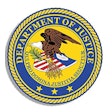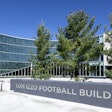Industry Leaders Speak Out on the Future of Athletics, Fitness and Recreation
The new millennium, as we all know, is technically a year away. Something about the number 2000, though, seems irresistible to people, the result being a glut over the past year of 20th century retrospectives clogging the airwaves and crowding out actual news in the daily papers.
We're no different. We took a look at our calendars and saw January 2000 as an opportunity to wipe the slate clean on the century that first saw financial valuations applied to what previously had been largely physical and spiritual pursuits. It's the century during which time sport became business, when athletic competition and recreation became organized - and, many people believe, their values became compromised.
To find out where we're headed, Athletic Business asked a group of industry leaders about the present, and the immediate future, of athletics, fitness and recreation. Their responses, on the following pages, paint a portrait of a future beset with problems - but one that's also brimming with promise.
Donna Lopiano, executive director of the Women's Sports Foundation
Most experts agree that the potential of the women's market is both vast and lucrative. There are several challenges that need to be met if that market is to be exploited to its full potential - for the benefit of female athletes, men and women who are fans of women's sports, and sporting goods and apparel manufacturers and sponsors who are seeking to establish their brands with the active female consumer.
The development of regularly occurring telecasts and netcasts of women's sports properties, predictable in both time and place, is essential. The absence of televised or netcast properties limits investment in women's sports because most corporate money is spent in these advertising media.
The volume and investment in men's sports product and its distribution on television and in stores has the potential of slowing the growth of the women's sports market simply because there are no more optimum viewing time slots or store space for the display of new women's product. The identification of less-cluttered opportunities, probably on the Internet and satellite television, pose the best solution to this challenge. Product must be displayed and there must be inventory if it is to be sold and consumed - and if it is to grow.
Key to the development of the women's sports market will be strategic early investment by key manufacturers, sponsors, retailers and league owners who seek to establish a reputation of respecting and catering to the needs of active female consumers. Current low prices and the absence of sponsor clutter make women's sports a good investment. Without this seedmoney investment, growth will be slow and uneven.
Champion female athletes will be challenged to maintain their current product differentiation - family entertainment, accessibility to fans, wholesome values - as they benefit from increased salaries, purses and endorsements. Can they continue to do so, or will they follow in the footsteps of their male counterparts?
Ken Germano, executive director of the American Council on Exercise
As I look into my crystal ball and try to forecast the future, what I see is frightening. By the first decade of the new millennium, I expect obesity will have reached epidemic proportions in this country. Adults, seniors and children will all suffer from the many problems that come with obesity.
As the epidemic grows, the government will make major efforts to alleviate the problem. Legislation will be put in place and tax dollars will be allocated to combat obesity, especially in children. National physical education curricula will be reintroduced in school systems. And, thanks to programs like Operation Fit Kids, on-site gyms in schools will be commonplace.
The government will also work together with groups such as ACE to educate the public about ways to combat obesity, with regular exercise topping the list. As people realize the preventive and rehabilitative value of exercise, the fitness industry will gain legitimacy. Standards will also be raised across the board for both fitness professionals and health clubs. Certification may not be required by law, but it will become an industry-wide requirement and only those certifying organizations with the highest standards will be accepted. Insurance companies will recognize the value of well-designed fitness programs and will reimburse for a wide range of fitness-related services.
The demand for qualified fitness professionals will also grow as more people seek guidance in their efforts to battle obesity. Consumers will realize the necessity of working out with experienced fitness professionals and will likely recognize the difference between various "brands" of certification. Web-based personal training will also become big business in the coming years. "Cybertrainers" will likely make up a large portion of the fitness professional population as people look to on-line resources to help themselves get fit.
After many years of public education and billions of dollars spent in the fight against obesity, the epidemic will begin to subside. And like eating and sleeping, exercise will become an inextricable part of our lives and our culture.
Judith Young, executive director of the National Association for Sport & Physical Education
Ihave a dream for this new century of a healthier America where everyone's body is at its full moving potential. Like finely tuned instruments playing beautiful music, our bodies would be prepared, cared for and moving in harmony to help us reach our life goals. Children and adults would enjoy a high level of physical fitness, enjoy physical activity of all kinds, and have energy and physical stamina. Can you imagine our vitality as a nation if every American functioned at maximum physical potential?
Active kids and adults learn better, are more productive and are better able to enjoy all aspects of life. Research confirms that physical activity reduces the risk of developing heart disease, high blood pressure and diabetes. Many students and adults, however, are not getting enough physical activity and do not take responsibility for their own physical health.
In physical education programs across the country, children are taught how and why they can and should be physically active. A quality program provides instruction in a variety of motor skills and provides opportunities for all children to improve their cooperative skills and compete constructively. Children need to know that physical activity, whether through sport, dance or other outlets, helps them feel good, look good and be successful in school, offers them options for fun and enjoyment, and keeps them healthy.
We've shifted the focus from competition to performance, variety, meeting personal challenges and reaching a level of fitness that supports good health. Kids learn and practice basic skills (throwing, catching, kicking and so on) so that they have success when they take the field. The National Standards for Physical Education provide a blueprint for what students should know and be able to do to become physically educated adults. The new message that local school districts are giving kids about exercise is simple. Physical activity must be a regular part of everyone's daily life to be beneficial. If taught in a positive, supportive environment, it will provide enjoyment throughout life.
Cedric Dempsey, executive director of the National Collegiate Athletic Association
Early in the next century - in 2006, in fact - the National Collegiate Athletic Association will celebrate its centennial. It has been a challenging first century for the NCAA and intercollegiate athletics, and the next 100 years are likely to be just as interesting. The issues colleges and universities were addressing 20, 40 and 60 years ago are much the same as they are today. The specific facts and the individuals engaged in the debates have changed, but the issues regarding freshman and continuing eligibility, amateurism, commercialism, competitive equity and parity, and sportsmanship and ethical behavior were being discussed at NCAA Conventions in the 1920s. They will be discussed again at the 2000 Convention.
What has changed is the enormous growth in popularity of college sports in general, and football and basketball in particular. This growth has occurred not only nationally but also internationally. In the last two decades, the world has "discovered" these two sports, and other lower-profile sports are benefiting from all the attention. The recently completed $6 billion, 11-year contract-extension agreement with CBS to televise the men's basketball tournament is a testament to just how popular college sports have become. This country's college sports model is unique in the world, and we see a growing number of international student-athletes pursuing their education through this model.
Within this environment of increasing popularity, our leadership must maintain the appropriate balance between the immense opportunities for commercialization of our events on the one hand, and on the other, our mission to maintain intercollegiate athletics as an integrated part of higher education and the studentathlete as an integrated part of the student body. Those of us engaged in college sports will be and should be judged not by how well we popularize intercollegiate sports, but by how well we use the inevitable popularity of college sports to meet our educational mission. True north for us must always be building student-athletes into leaders.
Robert F. Kanaby, executive director of the National Federation of State High School Associations
The value of sport comes not in scoring goals, but in pursuing them. At the highest levels, only a few are privileged to join in the pursuit. At the high school level, I am proud to say, the door is open much wider. The majority of the nation's high school students engage in sport at some level, and they gain lifelong benefits in the process. In the new century, we need to make sure the door stays open.
We are all accountable for the quality of our work and the clarity of our vision. We must adjust our tactics to the times, but our strategy remains valid that sport is a key to our evolving system of education. In addressing the changing needs expressed by parents, courts, legislators and state boards of education, we must hold true to our goals of fairness and inclusiveness. This strategy depends heavily on the fine work of state high school athletic associations, but it also requires some degree of accountability by the non-education-based organizations that impact the lives of student-athletes.
We must resist the desire to mold high school athletics into the shape of college, professional or non-school programs. In the face of trends toward national tournaments, extended schedules and single-sport athletes, we must continue to help parents and student-athletes understand the tradeoffs involved in athletic elitism and self-absorption.
Athletic participation is an end in itself, but it can be much more. Teachers, coaches, administrators and parents, as well as the people administering collegiate and professional sports, must work together to ensure that student-athletes develop the qualities that make them productive citizens. We can no longer accept unsportsmanlike or unethical behavior at any level, dismissing it due to the "heat of the game." Sports will, for better or worse, affect the quality of our national values. Those of us in positions to influence sport as a force for good have a special opportunity and a great responsibility.
The next century's challenge will be to funnel the energy and purpose of organized sports at all levels into a positive force. This goal can be realized if existing interests, public and private, support our inclusive, school-based system of athletic participation.
Sharon Lincoln, executive director of the Coalition of Americans to Protect SportsWhen CAPS was first organized in the late 1980s, its primary goal was to educate the sports and recreation community on the dangers posed by liability and litigation problems. Our sports injury risk-management programs were developed to meet this goal, and for most of the '90s, CAPS has been presenting seminars and educating sports providers in risk-management techniques that help reduce the risk of injury to participants, thereby minimizing the threat of lawsuits.
As a part of the Sporting Goods Manufacturers Association family, nothing CAPS does is static; all our programs are ongoing, evolving or shifting emphasis as the industry changes. We know our country needs to change the way we encourage young people to be physically active and healthy. One emerging issue for us in the new millennium is the current lack of physical education programs in our schools. Almost half of all people aged 12 to 21 - and more than a third of high school students - do not participate in vigorous physical activity on a regular basis. Senator Ted Stevens (R-Alaska) recently introduced legislation to promote physical education by providing financial incentives to local school districts. This $400 million bill, titled the Physical Education for Progress (PEP) Act, is one we all need to support. It's a positive move for health, for social and emotional development, for discipline - and for the sporting goods industry.
Of course, physical educators need to pay the same attention to safety issues as do other athletic personnel. Our goals for the 21st century will be to focus on physical education programs and to provide information on and encourage the use of sound risk-management strategies, which will significantly reduce the occurrence of accidental injury (along with the threat of resultant litigation) and bring participants a healthier, safer experience.
Barry Mano, executive director of the National Association of Sports Officials
Wanted: Athletically inclined, take-charge, fair-minded person who has thick skin, small ears and a calm demeanor, and is able to stand verbal and sometimes physical abuse. Low pay, nights and weekends, intense working conditions. Send résumé.
This "classified ad" pretty well sums up the special qualities needed to become and remain an official - and why the pool of available sports-official candidates is shrinking. Officiating has never been tougher. An official not only has to contend with the play situations of the game itself, but with a host of other issues, including the potential of physical abuse by fans.
The increasing lack of respect for authority in general is having a deleterious impact on sports. Across the country, there has been a quantum increase in the public questioning of officials' performance and the use of violence to demonstrate unhappiness with calls. At NASO, we're concerned and alarmed at the same time. We feel these trends do not bode well for the future of organized sports.
Officials level the playing field and ensure the game is played by the rules. Clearly, there has been and continues to be a dropoff nationwide in the number of officials available to fulfill game assignments. Many governing associations have to scrape the barrel just to get a warm body in a striped shirt to the game site on time. Unfortunately, without quality officials, the games we play will quickly be taken over by the aggressive, the violent and the unfair.
Accordingly, our primary emphasis moving into the new millennium is fourfold: To assist governing bodies in their quest to recruit and train officials; to produce educational and training materials that will have a demonstrably positive impact on officiating performance; to help our 19,000 members and officials in general to better understand the skills and abilities necessary to have a safe and successful officiating career; and to be active in the legislative arena as an advocate for statutes that specify harsh penalties for anyone who physically assaults or threatens an official. The health of our games hinges on all four.
Richard E. Lapchick, director of Northeastern University's Center for the Study of Sport in Society and of the National Consortium for Academics and Sport
All of us involved in higher education have to be upset that America's colleges received the worst grade for racial diversity in hiring practices in the 1998 Racial and Gender Report Card. The fact that we were only ahead of the NFL in terms of gender equity was of no comfort.
The bottom line is simple: For the most part, white men continue to run college sports. As in the pros, we are doing very well regarding the diversity of those playing college sports; it is away from the fields where we come up short.
In the 1997-98 study, the percentage of African-American Division I athletic directors stood at 3.2 percent, down from an already low 3.7 percent in 1995-96. Only 1.4 percent were other people of color. Assistant and associate AD posts failed to offer much hope for immediate change, with only 7.5 percent of those Division I positions held by African-Americans and another 1.5 percent by other people of color.
The ratio of Division I women ADs rose from 7.5 to 8.2 percent during that time. Women did much better in Division I assistant and associate AD posts, with 27.7 percent of the total.
According to the report, excluding the historically black colleges and universities, only 5.8 percent of Division I men's head coaches were African-American and 2.1 percent were other people of color, for a combined total of 7.9 percent, up slightly from 6.9 in 1995-96. Among Division I women's teams, 7.8 percent were coached by people of color, up from 7.6 percent in 1995-96.
I am confident that NCAA Executive Director Cedric Dempsey will continue to take a strong stand on issues of diversity. However, the numbers and percentages overall show clearly that we have a long way to go on issues of race and gender. All of us involved need to do more to make our departments look more like our athletic teams.
Kent Falb, head athletic trainer for the Detroit Lions and president of the National Athletic Trainers' Association
As the athletic training profession enters a new era, the face of tomorrow's practitioner is changing. Issues such as state legislation, thirdparty reimbursement, increased public awareness, expanding practice settings and a global interest in the profession emphasize the dynamic nature of the occupation. However, each of these issues springs from a single source - the overhaul of athletic training education.
Education gradually came into focus as a catalyst for significant professional progress. As sports medicine began to emerge as a medical specialty, athletes, parents and coaches realized medical care makes a difference not only in short-term athletic success but also in long-term quality of life. That message is being heard even more today, and athletic training is answering the call for qualified specialists. An education evolution that started in the 1950s continues today, spurring certification, formal curricula and continuing education requirements.
An emphasis on education has remained a thread running through each generation of athletic training leaders, who built upon existing education parameters and continued to fine-tune the standards. By the end of 1996, the NATA board of directors had approved recommendations from an exhaustive, nearly two-year study by the NATA Education Task Force, setting 2004 as the year for all reforms to be in place.
Among the 18 recommendations, two have been recognized as having the most potential impact, both now and in the future: First, the NATA board decided to merge the internship route to certification with the curriculum route, thereby placing more emphasis on academic preparation.
Second, the board determined that all athletic training curricula must be accredited by the Commission on Accreditation of Allied Health Education Programs, effectively guaranteeing top-quality academic preparation. Both actions ensure the credibility of the profession, and in the changing landscape of managed care, credibility can mean the difference between professional survival and demise.
Fred Engh, founder and president of the National Alliance for Youth Sports
Sports in the next century will continue to be the greatest resource we have for children to learn valuable life skills. However, this can only happen if we demand education for the millions of volunteers who make organized youth sports possible. While organized sports for children are by and large a healthy experience, far too many children turn away from sports because of negative influences in today's society, such as parents who project their sports frustrations onto their children, volunteer parent coaches who get hung up on the win-loss column and league administrators who have little knowledge and fail to focus on the elements necessary for children to have a safe and positive sports experience.
NAYS was founded to counteract these influences and, over the past 18 years, the organization has become a leading advocate and educator for positive out-of-school youth sports. Due to the dedication of recreation professionals across the nation, our many programs and services have benefited more than 1.3 million administrators, officials, coaches, parents and children, and have actively helped to set high standards in the youth sports environment. As we enter a new millennium, NAYS will remain devoted to improving the youth sports experience in America, but we ask others to do their part. We call on professionals, parents and others who care about kids in sports to take action and demand higher standards for youth sports programs in their community.
Together, we must insist that all parents attend orientation programs to understand the impact of their behavior on their child's sports experience. We should demand that all volunteers coaching children follow a code of ethics and are accountable should they fail to live up to it. Those who lease facilities to leagues must require administrators to complete a basic course in youth sports administration. Then and only then will we give all children an equal opportunity to learn and grow through the incomparable benefits sports have to offer - for a lifetime.
John McCarthy, executive director of the International Health, Racquet & Sportsclub Association
As we move into a new century, IHRSA, ACE and The Fitness Products Council are united in pursuit of one goal - namely, to see the number of health club members worldwide reach 100 million by the year 2010. At present, there are 29,483,000 health club members in America, 16,350,000 in Europe and five million in the rest of the world. In short, there are currently around 50 million health club members worldwide. Our goal is to double that number in the next decade.
To do that, the industry has one need that surpasses all others. That one need is the recruitment of "SWANs" - people who are Smart, Willing to Work, Ambitious and Nice.
Far more important than recruiting members, recruiting SWANs is the make-or-break issue for the future of this industry. At present, every club owner I talk with is looking for people with the aptitude and attitude for selling to and servicing members. Rightly, every seasoned club owner and club manager realizes that the one and only key to long-term club success is recruiting such people and retaining them as treasured employees. Most clubs today are in a perpetual recruitment mode. They are always looking, always searching, always interviewing.
The opportunity to find such individuals has never been greater, mainly because the industry is expanding at an unprecedented pace. But the opportunities currently available in the industry do not come without a price tag. On average, the typical club is open 17 hours per day, 119 hours per week, 365 days per year. That means that every employee does his or her share of club openings at 5:30 or 6 a.m., and club closings at 11 or 11:30 p.m. It means that every employee works his or her share of weekends. Also, everyone in the industry wears many hats. In one way or another, everyone is involved in sales, everyone is involved in member service and everyone is involved in keeping the club as clean as possible. Only people who enjoy wearing multiple hats will be happy and successful in this type of work.
Yvonne Ingram-Rankin, business development manager of StayWell Inc. and president of the Association for Worksite Health Promotion
Over the next five years, health promotion will show an increased emphasis on the healthenhancing role of physical activity, stress management and spiritual well-being. While technology will grow as a way to deliver health education, there will continue to be a need for the "high touch" approach to reaching individuals.
Health-promotion trends of the next century cover everything from physical activity to spirituality:
- There will be a demonstrated strong link between health and productivity, stimulating employers to seek broad strategies that optimize the health of individual workers, work environment and worksite culture.
- Future research will identify greater return on investment from helping lower-risk individuals stay healthy, as opposed to a primary focus on improving the health behaviors of high-risk individuals.
- The role of physical activity as a means to improve health and achieve optimal well-being will become a major public health issue, much like smoking has been from the late 1960s to the present. Physical inactivity will be recognized as one of the top U.S. public health concerns.
- More emphasis will be placed on the health issues arising from the "information age." The information explosion and pace of change are increasing the impact of stress and other factors. A sense of "disconnection" with others and lack of strong relationships will lead to an increased interest in spirituality and its role in health.
- Health enhancement programs for senior populations will be in demand as the population continues to age and life spans increase.
The focus will be on improving and maintaining physical strength and the management of chronic conditions so independent living may be maintained.
Health promotion will be a growing industry in the new millennium as we continue to push the average life span toward the century mark. Health promotion professionals must expand their thinking about the needs of their populations to include psychosocial and spiritual concerns, as well as physical health.
Kent J. Blumenthal, executive director of the National Intramural-Recreational Sports Association
Historically, recreational sports and intramural program success has been measured by the overall number of teams and participants (by sport), the quality of athletic facilities, and the skills and talents of the individuals who plan, organize and implement these programs. While information collected on these factors remains important, sustained growth of recreational sports programs in collegiate, community and military settings will depend on dynamic research and data collected on a variety of issues that affect our changing world. Hallmarks of the future will be market research related to participant needs and interests, recognized standards for facilities and programs, participant assessments related to the impact of participation on individual attributes, and training, continuing education and certification for professionals. The NIRSA board of directors, recognizing the need for bona fide research demonstrating that participation in recreational sports has intrinsic value for individuals and society, has taken a step in this direction by agreeing to fund the NIRSA 2000 Project, an initiative that will undertake market research about our customers and our organization.
Currently, an estimated 2,250 institutions of higher education run intramural programs attracting 12 million participants, resulting in more than 620 million hours of participation each year. Collegiate recreational sports departments' operational budgets exceed $1 billion each year. Looking solely at colleges and universities, the activity, participation and construction boom has already begun. As more and more Americans enjoy active and healthy lifestyles, and increasing numbers of children participate in recreational sports programs, it's logical to assume that there will be increased demand for recreational sports activities, services and facilities from all sectors of the population for the foreseeable future.
Imagine athletics, recreation and fitness in the next century. Envision communities predisposed to the knowledge that participation in recreational sports has constitutional value. Form a mental picture in your mind of people, young and old, physically fit and emotionally mature. Contemplate an ennobled society and enhanced community life. Instead of an increase in sport spectators, perhaps we ought to dare to expect multitudes of champions, victors, winners and stars - active participants in recreational sports programs.
Roger Galvin, chief executive officer of the National Spa and Pool Institute
Recently, I've read articles talking about how American kids are massively overweight. More than 70 percent of 10- to 13-year-olds are overweight, and will be overweight and obese as adults.
These numbers are not only alarming and disheartening - they portend a future that holds skyrocketing medical costs for a nation already questioning how we're going to pay for the baby boomers moving into late middle age. And by the time those 10- to 13-year-olds are adults, the baby boomers will be the primary customers of Medicare and Medicaid. Both of these groups will exert a tremendous pull on our already strained medical system. But what do overweight kids have to do with swimming pools and the future of the athletics, fitness and recreation industries?
The National Spa and Pool Institute has been working for more than five years on obtaining funding for swimming pools and other recreational programs - and we have finally been successful. This past summer, the U.S. House of Representatives approved more than $30 million in funding for the Land and Water Conservation Fund. In reality, the appropriation will translate into more than $60 million because it requires matching funds at the local level for pools and other recreational - read: physical fitness - equipment and programs.
Our concern is not that altruistic - we know that NSPI members will be building these pools and will reap the financial benefits of the appropriation - but deeper, we know that a healthier nation will be more productive and competitive in the growing world economy.
In fact, we have adopted the slogan, "Every American a Swimmer for Life," and it makes no difference to us if that activity takes place in a backyard pool, a community pool in the inner city or a cluster pool in the suburbs - just so it takes place.
We're proud of the work that went into getting this appropriation finally approved - for the benefit of the pool industry, and for all the overweight kids who we will get into shape.
Bobby Dodd, executive director of the Amateur Athletic Union of the United States Inc.
Of the many challenges facing nonprofit sports organizations in the next century, I believe that attracting quality, personally dedicated volunteers is of primary importance. Invigorating a legion of volunteers to perform necessary administrative functions, while at the same time inspiring young athletes to excel in their sports, is a formidable task.
It would appear, on the surface, that background investigations would prevent the occasional rotten apple from invading the proverbial barrel. However, that alone will not prevent the first-time offender from indulging in an initial perversion. To prevent such reprehensible conduct is a top priority in the AAU. Not only is inappropriate behavior repugnant, it is absolutely not to be tolerated. We must be vigilant and make every effort to purge those who would presume to exploit the young athletes to whom we have dedicated our lives.
An equally important challenge for nonprofit organizations is the increase in frivolous lawsuits filed by opportunists who seek nothing but monetary gain. Any organization with national name recognition is a target for those who inundate the courts with false claims. Many abusers of the legal system hope corporations will settle out of court rather than commit many hours of staff time to the case and pay exorbitant attorneys' fees.
These fiduciary freeloaders are causing insurance premiums to skyrocket. The explosion of frivolous lawsuits is crippling smaller organizations and even debilitating corporate giants. Somehow the legal system has to be able to identify and expurgate the fraud. How we accomplish this will be a major challenge as we enter the new millennium.
Paul Anderson, assistant director of the National Sports Law Institute and an adjunct professor of law at Marquette University Law School.
The 1990s have seen unparalleled growth in the field of sports law as specifically applied to all levels of athletics, recreation and fitness. Participants, fans, sponsors and teams continue to search for ways to use the law to properly define their relationships within athletics and to solve disputes that often arise during competition and events.
There has been a pronounced increase in the use of general laws - antitrust, ADA, Title VI, Title IX - in various attempts to regulate sports associations at all levels. The NCAA, which has faced recent attacks under all of these laws, is at the center of this trend. As courts continue to allow individuals to use the law to attack eligibility and participation rules, the traditional function of such regulatory associations will change.
In addition, as technology has changed and the value of rights to sporting events has increased, knowledge of intellectual property law (trademarks, copyrights, patents, licensing and so on) has become vital to those in the sports industry. With the increased popularity of and access to sports worldwide, learning to protect the value of these rights, and how to obtain the most value from them, will continue to be a necessity. Those within the sports industry have to understand that the United States no longer defines and controls the market for sports production or consumption.
The NBA, NFL and MLB have already recognized the incredible value in providing sports to consumers internationally, and soccer, the world's most popular sport, has finally begun to take root in America. With the market expanding beyond the boundaries of the United States, industry professionals must now be familiar with the many different legal systems present throughout the world.
In the area of sports law, then, the next century will demand a specialization within and knowledge of every other area of law and its application to the sports industry.
Kirk Bauer, executive director of Disabled Sports USA
As we enter the new millennium, a foundation has been laid for an era of opportunity for people with disabilities. Landmark federal legislative initiatives and regulations, new architectural standards, transformed public opinion, and new technologies and equipment provide the basis for opportunity. Most important, there is a new attitude and optimism on the part of people with disabilities about their own capabilities, which will enable all to enter the mainstream of society and lead active, productive lives.
In sports, this will manifest itself into an ever-expanding list of activities, new records being set by athletes with disabilities, expanding corporate support for what will be viewed as marketable sports events and athletes, and ultimately, the integration of athletes with disabilities into mainstream sports programs and competitions.
Most of the progress has been made in the last decade. It started with the 1990 passage of both the Americans with Disabilities Act and the Individuals with Disabilities Education Act. In 1998, amendments to the Amateur Sports Act of 1978 recognized Paralympic athletes and the Paralympic Games as an integral part of the Olympic movement in the United States. Finally, just a few months ago, Congress passed the Work Incentives Improvement Act, which provides expanded health-care and training benefits for individuals with disabilities who want to return to gainful employment. This is considered the most significant piece of disability-oriented legislation since ADA.
With unemployment at historic lows, corporations realize the value of providing training and opportunity for the nearly eight million Americans with disabilities who want to return to work. In supporting sports programs, these corporations realize their value in providing the tools for full rehabilitation of the individual in preparation for employment.
Because of this, recreation is an important area in which we are seeing, and will continue to see, explosive increases in participation. At last count, DS/USA chapters were providing programs in 20 different sports, including Alpine and Nordic skiing, snowboarding, water skiing, cycling, volleyball, running/ wheeling, swimming, golf, climbing, fitness conditioning and scuba - and the list keeps growing. With the aforementioned laws and new technology, equipment and training, more and more disabled individuals will take up an active lifestyle and participate in this broad range of activities.
































